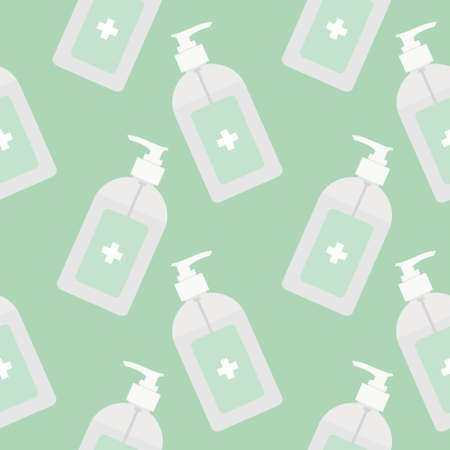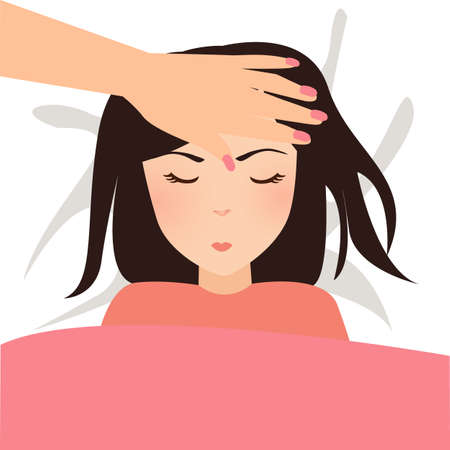Understanding Sulphates and Their Impact on Hair
If you’ve ever taken a closer look at the back of your shampoo bottle, you may have noticed ingredients like sodium lauryl sulphate (SLS) or sodium laureth sulphate (SLES). These are known as sulphates, a group of cleansing agents widely used in traditional shampoos across the UK. But what exactly are sulphates, and why are so many Brits starting to avoid them?
Sulphates: What Are They? Sulphates are detergents that help create that rich, foamy lather we often associate with a thorough hair wash. Their primary function is to break down oil and remove dirt from the scalp and strands, leaving your hair feeling squeaky clean. However, while effective at cleaning, they can also strip away natural oils essential for maintaining healthy hair and scalp.
The Role of Sulphates in Traditional Shampoos For decades, SLS and SLES have been popular in mainstream shampoos due to their deep-cleansing properties and ability to produce a satisfying suds. Yet this intensive cleansing comes with drawbacks—especially for those with sensitive skin, colour-treated hair, or naturally dry locks. Overuse of sulphate-based products can lead to dryness, irritation, and even increased frizz.
Why Are People in the UK Ditching Sulphates? More people across Britain are becoming ingredient-savvy, opting for gentle alternatives that prioritise scalp health and environmental sustainability. The move towards sulphate-free shampoos is driven by concerns over irritation, hair colour fading, and the desire to preserve natural moisture. Additionally, growing awareness about eco-friendly beauty practices has prompted many UK consumers to seek out products that are kinder both to their bodies and the planet.
Understanding these basics is crucial before making the switch. In the following sections, we’ll explore how you can successfully transition to sulphate-free shampoos and what benefits you might expect along the way.
Benefits of Sulphate-Free Shampoos for Different Hair Types
If you’re considering making the switch to sulphate-free shampoos in the UK, it’s important to understand how these formulas interact with a range of hair types and scalp needs. Sulphates—commonly sodium lauryl sulphate (SLS) or sodium laureth sulphate (SLES)—are powerful cleansing agents but can be harsh, particularly for those with specific hair concerns that are prevalent across Britain’s diverse population. Let’s break down who stands to benefit most from going sulphate-free, especially when factoring in local water hardness, unpredictable weather, and everyday British lifestyle factors.
| Hair Type/Concern | Common Issues in the UK | How Sulphate-Free Helps |
|---|---|---|
| Coloured Hair | Fading due to hard water and frequent washing | Gentler cleansing preserves colour vibrancy and reduces dullness |
| Curly or Textured Hair | Frizz and dryness exacerbated by rain and humidity | Mild surfactants retain natural oils, define curls, and reduce frizz |
| Sensitive Scalps | Irritation from pollution and temperature changes | No harsh detergents; soothes irritation and maintains moisture balance |
| Dry or Damaged Hair | Brittleness from central heating or over-styling | Non-stripping formula supports hydration and repair |
| Fine Hair | Limpness from product build-up or soft water regions | Lighter cleansing without heavy residue, promoting volume |
British-Specific Considerations
Hard Water and Sulphates: A Double Whammy?
Many UK households contend with hard water, which already makes it harder for shampoo to lather and rinse cleanly. Adding sulphates can further strip hair of essential oils, leaving it feeling squeaky but vulnerable. Sulphate-free options help counteract this by offering a softer cleanse that works harmoniously even in hard water areas.
Cultural Trends: Eco-Conscious Choices on the Rise
The move towards greener beauty is strong in the UK, and many sulphate-free shampoos boast eco-friendly credentials—a win-win for your hair and the environment. If you’re dealing with coloured, curly, or sensitive hair—or just want to future-proof your routine against British climate quirks—sulphate-free might be your best bet.

3. Steps to Smoothly Transition to Sulphate-Free Shampoos
Making the switch to sulphate-free shampoos can seem daunting, especially with the UK’s characteristic hard water and damp climate. However, a thoughtful approach can help your hair adjust more comfortably. Here’s how you can ease into this new routine while keeping your locks healthy and manageable.
Understand Your Hair and Scalp Needs
Begin by assessing your hair type—whether it’s fine, thick, curly, or colour-treated—as well as your scalp condition. Sulphate-free formulas are generally gentler but may cleanse differently than traditional options. For those living in areas with hard water (common in much of England), mineral build-up can make hair feel heavy. Consider incorporating a gentle clarifying rinse with apple cider vinegar once a week to remove residue without stripping moisture.
Gradually Reduce Sulphates
If you’re used to conventional shampoos, don’t rush the transition. Start by alternating between your regular shampoo and a sulphate-free option every other wash for two weeks. This gives your scalp time to adjust its oil production and helps you monitor any changes in texture or scalp health.
Adjust Your Washing Technique
Sulphate-free shampoos often produce less lather due to their milder cleansing agents like cocamidopropyl betaine or sodium lauroyl methyl isethionate. Don’t be tempted to use more product—focus on massaging it thoroughly into the scalp and roots, adding water as needed to distribute evenly. Rinse well to avoid build-up.
Rely on the Right Tools
With the UK’s variable weather contributing to frizz and dryness, invest in a good quality wide-tooth comb or detangling brush for wet hair. These tools help minimise breakage and distribute natural oils from root to tip, enhancing softness and shine.
Moisturise and Protect
The British climate can sap moisture from your strands, especially during colder months. Complement your sulphate-free routine with hydrating conditioners and weekly masks rich in nourishing ingredients such as argan oil, shea butter, or glycerin. Leave-in conditioners are also effective for combating static and frizz on damp days.
Be Patient with Results
Your hair may initially feel different—perhaps heavier or less squeaky-clean—but this is normal as your scalp recalibrates its natural oil balance. Within three to four weeks, most people notice improved softness, fewer split ends, and better overall manageability. Stick with the process for healthier hair that’s well-adapted to the unique challenges of UK living.
4. Common Challenges (and Solutions) During the Switch
Making the switch to sulphate-free shampoos in the UK can come with its fair share of teething issues. Understanding these common challenges—and knowing how to overcome them using locally available solutions—will help you make the transition smoothly.
Initial Greasiness
One of the most frequently reported problems among UK users is an initial period of greasiness or heaviness, particularly if your hair is accustomed to daily washing with traditional sulphate-based shampoos. This happens because sulphates are strong detergents that strip away natural oils, and without them, your scalp may need time to recalibrate oil production.
| Challenge | Local Solution |
|---|---|
| Greasy roots during first weeks | Try rinsing with lukewarm water and spacing out washes; use a British dry shampoo brand like Batiste between washes for freshness. |
| Build-up on hair lengths | Incorporate a weekly apple cider vinegar rinse (widely available at UK supermarkets) to help remove residue naturally. |
Lack of Lather
Sulphate-free shampoos typically produce less foam compared to conventional formulas, which can feel unsatisfying if you’re used to a bubbly lather. However, this doesn’t mean your hair isn’t being cleaned effectively.
- Technique tip: Add more water rather than more product—sulphate-free shampoos often activate best when well-diluted.
- Cleansing routine: Consider double-cleansing: apply a small amount of shampoo, rinse, then repeat for a deeper clean and more satisfying lather the second time.
Adjusting Haircare Routines for the UK Climate
The UKs climate—often damp and cool—can affect how your hair responds during the transition. Humidity may exacerbate frizz or limpness, while hard water in many regions can leave mineral deposits on your strands.
| Climate/Water Issue | Recommended Approach |
|---|---|
| Frizz from damp weather | Use a lightweight, UK-made leave-in conditioner or serum designed for humidity control. |
| Hard water build-up | Select a clarifying treatment formulated for hard water (look for products specifically labelled as such in Boots or Superdrug). |
Troubleshooting Product Availability in the UK Market
If you struggle to find a sulphate-free shampoo that meets your needs, check both high-street chemists and online retailers like Lookfantastic or Cult Beauty. Many British brands now offer targeted formulas for fine, curly, coloured, or sensitive scalps—so there’s no need to compromise on quality or suitability.
Summary Tips for Overcoming Transition Challenges
- Be patient—most hair types adjust within 2–4 weeks.
- Tweak your routine based on local conditions and available products.
- If problems persist beyond a month, try alternating with a gentle clarifying wash or consult a local trichologist for personalised advice.
By addressing these common hurdles with practical solutions rooted in UK routines and product availability, you’ll soon reap the benefits of healthier hair and scalp with your new sulphate-free regimen.
5. Top Sulphate-Free Shampoo Picks in the UK
If you’re ready to make the switch to sulphate-free shampoos, you’ll be pleased to know there’s a fantastic selection available across the UK—both on high street shelves and online. Here are some standout options that combine effective cleansing with gentle formulations suitable for British hair needs and water conditions.
High Street Favourites
Faith In Nature Coconut Shampoo
This much-loved British brand is often spotted in Boots, Holland & Barrett, and Waitrose. Their Coconut Shampoo is vegan, cruelty-free, and free from sulphates, parabens, and SLS. It gently cleanses while adding hydration—ideal for those with dry or curly hair struggling with London’s hard water.
Kind Natured Nourishing Shampoo
Widely available in Sainsbury’s and Superdrug, Kind Natured offers affordable, naturally derived formulas. The Nourishing Shampoo (with coconut milk and aloe vera) is especially good for sensitive scalps making the transition from traditional shampoos.
Pharmacy Finds
Aussie Miracle Moist Shampoo
A popular choice found in Boots and most UK pharmacies, Aussie’s Miracle Moist line is free from sulphates but still lathers well thanks to naturally derived cleansers. It’s excellent for reviving parched locks and smells distinctly fresh—a plus for daily commuters.
E45 Dry Scalp Shampoo
Available at Lloyds Pharmacy and larger Tesco stores, E45 is known for its dermatological expertise. This sulphate-free option soothes flaky or irritated scalps without stripping away natural oils—ideal for the unpredictable British weather.
Online Gems & International Brands
Briogeo Be Gentle, Be Kind™ Aloe + Oat Milk Ultra Soothing Shampoo
Briogeo is a cult US brand now easily shopped via Cult Beauty or LookFantastic UK. This ultra-gentle formula uses coconut-derived surfactants instead of harsh sulphates, suiting even the most sensitive skin types or colour-treated hair.
L’Oréal Paris EverPure Sulphate Free Moisture Shampoo
Readily ordered from Amazon.co.uk or picked up at Superdrug, this international favourite hydrates while protecting colour vibrancy—making it a smart swap for dyed hair during seasonal changes or after festival weekends.
Tips For Trying New Shampoos
When testing out any new sulphate-free shampoo, remember: allow a few weeks for your scalp to adjust, as you may experience less lather than usual at first. Pair with a clarifying rinse (like apple cider vinegar) once a fortnight if your hair feels weighed down during the transition.
6. Additional UK-Specific Hair Care Tips
Transitioning to sulphate-free shampoos in the UK brings unique challenges and opportunities for maintaining your hair’s health, especially considering local factors like hard water and unpredictable weather. Here are some expert, UK-specific strategies to keep your hair looking its best after making the switch:
Combatting Hard Water Effects
The UK is notorious for its hard water, which can leave mineral deposits on your hair, making it feel dry and look dull—even with gentle cleansers. To counteract this, consider using a clarifying treatment once every 1-2 weeks. Look for chelating shampoos containing EDTA or citric acid, specifically formulated for hard water areas. Alternatively, apple cider vinegar rinses (diluted well) can help remove buildup naturally. Installing a shower filter is another effective long-term solution to soften water at the source.
Nourishing Scalp Massages
After switching to sulphate-free shampoos, some people notice an initial increase in oiliness or dryness as their scalp adjusts. Incorporating regular scalp massages into your routine helps balance oil production and stimulates blood flow for healthy hair growth. Use your fingertips in small circular motions while shampooing or apply a lightweight British favourite like argan oil or rosehip oil before washing for added nourishment.
Selecting UK-Appropriate Styling Products
Sulphate-free routines often pair best with styling products that are also gentle and free from heavy silicones or drying alcohols. Seek out leave-in conditioners, serums, or styling creams labelled as “suitable for sensitive scalps” or “free from silicones,” which are widely available in UK high street shops and pharmacies. If frizz is a concern—especially during damp British weather—look for anti-humidity sprays made with natural polymers instead of harsh chemicals.
Protective Measures Against the Elements
The UK’s climate is famously changeable, so it’s wise to shield your hair from wind, rain, and pollution. A light mist of protective spray containing antioxidants (like vitamin E) can help minimise damage from urban pollutants. On blustery days, tying your hair back loosely or wearing a silk scarf under hats can prevent tangles and breakage.
Professional Maintenance
Finally, regular trims at your local salon will keep ends healthy and encourage better growth post-transition. Many salons across the UK now offer sulphate-free cleansing options—don’t hesitate to request them during your appointment.
By combining these tailored tips with your new sulphate-free regimen, you’ll give your hair the best possible care in the uniquely British environment.


